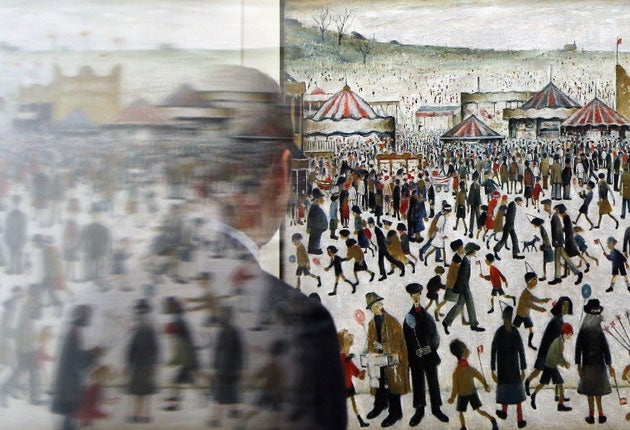Art moves from the corridors of power to the walls of Whitechapel

Your support helps us to tell the story
From reproductive rights to climate change to Big Tech, The Independent is on the ground when the story is developing. Whether it's investigating the financials of Elon Musk's pro-Trump PAC or producing our latest documentary, 'The A Word', which shines a light on the American women fighting for reproductive rights, we know how important it is to parse out the facts from the messaging.
At such a critical moment in US history, we need reporters on the ground. Your donation allows us to keep sending journalists to speak to both sides of the story.
The Independent is trusted by Americans across the entire political spectrum. And unlike many other quality news outlets, we choose not to lock Americans out of our reporting and analysis with paywalls. We believe quality journalism should be available to everyone, paid for by those who can afford it.
Your support makes all the difference.Some of the works have adorned the walls of Britain's corridors of power for more than a century, seen only in passing by a privileged few.
Now leading figures in British politics are offering an unprecedented insight into the art displayed in government buildings, from a contemporary drawing in the culture ministry to an abstract sculpture in Downing Street.
The Government Art Collection, with London's Whitechapel Gallery, is staging the first public art exhibition in its 113-year history. Seven luminaries from the world of politics, including the Prime Minister's wife, Samantha Cameron, and the Deputy Prime Minister, Nick Clegg, have chosen work for the show, which opened yesterday.
Mrs Cameron has chosen a bronze sculpture by Elisabeth Frink, oil paintings by LS Lowry and William Marlow, and a steel and wood construction by sculptor Mary Martin, all of which are normally hidden from view inside No 10.
Explaining her selection of the 1776 Marlow painting, A View of St Paul's and Blackfriars Bridge, Mrs Cameron said: "It is displayed in the White Room that is often used to welcome guests to 10 Downing Street. One of my earliest meetings in here was with the Sarkozys. Another draw of this painting is the River Thames which is hugely important to London and has become so for our family, now that we are closer to it and can walk along it more often."
The Lowry has been chosen to hang in Downing Street by most recent prime ministers, except for Tony Blair.
The Minister for Culture, Ed Vaizey, chose drawings by the former Young British Artists Tracey Emin and Michael Landy. "I first met Tracey Emin at a dinner about two years ago," said Mr Vaizey. "I was terrified beforehand but she couldn't have been nicer. She has since become a great guide to art for me.
"I chose these pieces not just because I wanted to have some of Tracey's work, but also because I spent every summer with my auntie and uncle in Margate as a child, so there is a strong personal connection."
Other works of note include a 16th-century painting of Queen Elizabeth I by an unnamed artist, which has not been seen in public for 50 years. It was chosen for the exhibition by Lord Mandelson. The other selectors were the MI6 chief, Sir John Sawers, the British diplomat Dame Anne Pringle and the Labour peer Lord Boateng.
Two-thirds of the Government Art Collection, which contains 13,500 pieces, is on display at any one time in government departments at home and embassies abroad. The rest is kept in storage. In March, a cross-parliamentary group of MPs recommended that the collection be merged with other government art collections owned by the British Council and Arts Council.
The Critic's View by David Lee
LS Lowry, "Good Friday Daisy Nook"
Though an untypical Lowry in many ways, this is a quicker, livelier version of one of the Salford artist's best pictures. Though a grandee, Mrs Cameron was born near Scunthorpe, so the northern subject is probably the reason she chose it.
Zarina Bhimji, 'Howling Like Dogs, I swallowed solid air 1998-2003'
This depressing image could only be selected by a victim with something grim on his mind. Mr Clegg should probably be on suicide watch. It is a photograph which can mean whatever you want it to mean. That is, it can mean tomorrow the opposite of what you said it meant today. Conceptual art is convenient like that.
Join our commenting forum
Join thought-provoking conversations, follow other Independent readers and see their replies
Comments